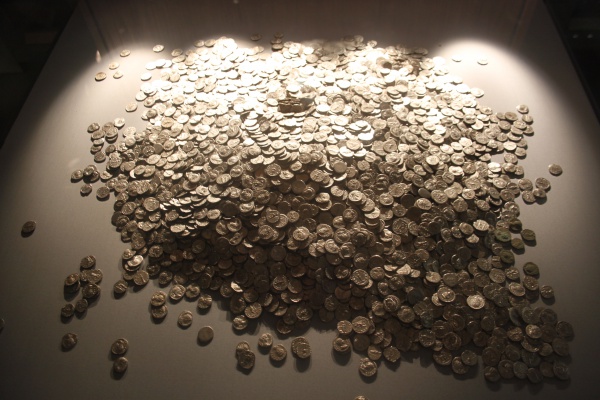Facts About Shapwick Hoard
In September 1998, an extraordinary discovery was made in Shapwick, Somerset, England—a treasure trove of 9,262 Roman coins, known as the Shapwick Hoard, spanning a historical period from 31–30 BC to 224 AD. This hoard is particularly notable for including two rare coins never before seen in Britain and for being the largest collection of silver denarii ever found in the country.
The fortunate finders were amateur metal detectorists Kevin and Martin Elliott. They unearthed the coins buried in what turned out to be a room within an unidentified Roman building, later determined to be part of a courtyard villa. Following a treasure inquest in Taunton, the hoard was officially designated as treasure and valued at £265,000. With the support of various organizations, Somerset County Museum Services acquired the hoard, which is now proudly exhibited at the Museum of Somerset in Taunton Castle. The Elliott cousins didn't stop there; they later discovered an additional 23 coins, valued at £690, further contributing to the treasure.
Among the captivating coins in the hoard are those from the reigns of Mark Antony and Septimius Severus, as well as two rare coins depicting Manlia Scantilla, the wife of Emperor Didius Julianus. The collection even includes non-Roman coins like Lycian drachmae and a drachma from Caesarea in Cappadocia. To put it in perspective, the hoard represented approximately ten years' wages for a Roman legionary.
Shapwick has a storied history of hoard discoveries, with the 1998 find being the most significant. Previous finds date back to 1868, with more treasures unearthed throughout the 20th century.

 Ireland
Ireland